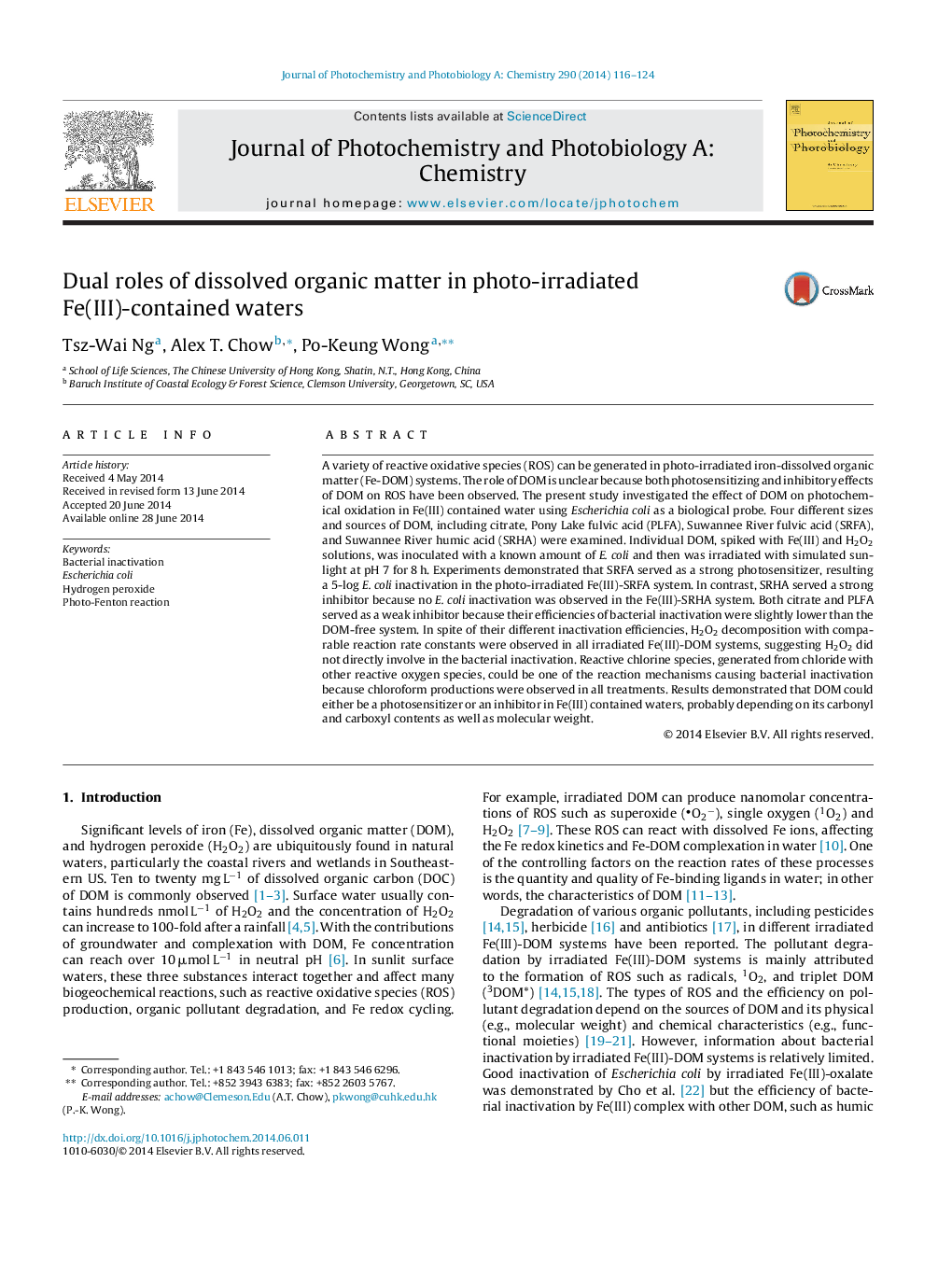| کد مقاله | کد نشریه | سال انتشار | مقاله انگلیسی | نسخه تمام متن |
|---|---|---|---|---|
| 26947 | 43988 | 2014 | 9 صفحه PDF | دانلود رایگان |

• DOM can be a photosensitizer or inhibitor in Fe(III) contained waters.
• Light irradiated Fe(III)-SRFA system can effectively inactivate E. coli in water.
• H2O2 does not directly involve in the bacterial inactivation in Fe(III)-DOM systems.
• Haloform production suggests reactive halogen species involve in inactivation process.
A variety of reactive oxidative species (ROS) can be generated in photo-irradiated iron-dissolved organic matter (Fe-DOM) systems. The role of DOM is unclear because both photosensitizing and inhibitory effects of DOM on ROS have been observed. The present study investigated the effect of DOM on photochemical oxidation in Fe(III) contained water using Escherichia coli as a biological probe. Four different sizes and sources of DOM, including citrate, Pony Lake fulvic acid (PLFA), Suwannee River fulvic acid (SRFA), and Suwannee River humic acid (SRHA) were examined. Individual DOM, spiked with Fe(III) and H2O2 solutions, was inoculated with a known amount of E. coli and then was irradiated with simulated sunlight at pH 7 for 8 h. Experiments demonstrated that SRFA served as a strong photosensitizer, resulting a 5-log E. coli inactivation in the photo-irradiated Fe(III)-SRFA system. In contrast, SRHA served a strong inhibitor because no E. coli inactivation was observed in the Fe(III)-SRHA system. Both citrate and PLFA served as a weak inhibitor because their efficiencies of bacterial inactivation were slightly lower than the DOM-free system. In spite of their different inactivation efficiencies, H2O2 decomposition with comparable reaction rate constants were observed in all irradiated Fe(III)-DOM systems, suggesting H2O2 did not directly involve in the bacterial inactivation. Reactive chlorine species, generated from chloride with other reactive oxygen species, could be one of the reaction mechanisms causing bacterial inactivation because chloroform productions were observed in all treatments. Results demonstrated that DOM could either be a photosensitizer or an inhibitor in Fe(III) contained waters, probably depending on its carbonyl and carboxyl contents as well as molecular weight.
Figure optionsDownload as PowerPoint slide
Journal: Journal of Photochemistry and Photobiology A: Chemistry - Volume 290, 15 September 2014, Pages 116–124